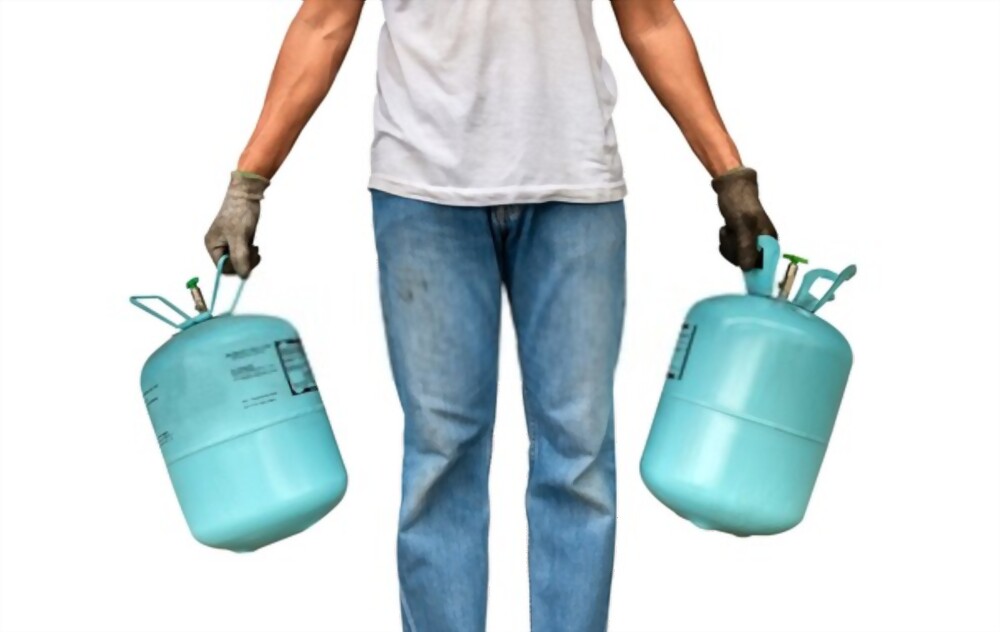Refrigerants play a crucial role in the functioning of air conditioning and refrigeration systems, responsible for keeping us cool and comfortable. However, recent environmental concerns have led to the phaseout of certain refrigerants, such as R-22, due to their harmful impact on the ozone layer. This has prompted the industry to shift towards more eco-friendly alternatives, with 410A emerging as a popular replacement. In this blog, we’ll explore the key differences between 410A and R-22, and why the switch to 410A refrigerant is essential for a sustainable future.
Understanding R-22
R-22, also known as Freon, has been widely used in air conditioning systems for several decades. While it was effective at cooling, R-22 has been identified as an ozone-depleting substance. Ozone depletion contributes to the greenhouse effect and climate change, which led to the implementation of the Montreal Protocol in 1987, phasing out the production and importation of R-22. This means that R-22 refrigerant will become increasingly scarce and expensive over time.
Enter 410A Refrigerant
410A, also known as Puron, is a hydrofluorocarbon (HFC) refrigerant that has become the go-to replacement for R-22. Unlike R-22, 410A does not contribute to ozone depletion. Additionally, 410A has better thermodynamic properties, resulting in improved energy efficiency and cooling capacity. It allows air conditioning systems to operate at higher pressures, enabling more effective heat transfer and better overall performance.
Energy Efficiency and Cost Savings
One of the major advantages of 410A refrigerant is its energy efficiency. Due to its superior thermodynamic properties, air conditioning systems running on 410A can provide the same cooling output while consuming less energy compared to R-22 systems. This translates into reduced utility bills and cost savings for the consumer.
In fact, studies have shown that upgrading to 410A can result in energy savings of up to 30% compared to R-22. With rising energy costs, this is a significant benefit that homeowners and businesses can enjoy over the long term.
Environmental Impact
As mentioned earlier, 410A refrigerant is an HFC, which means it does not deplete the ozone layer. While HFCs have a high global warming potential (GWP), efforts are underway to develop and implement alternative refrigerants with even lower GWP. Nevertheless, 410A is still a significant improvement over R-22 in terms of environmental impact. By switching to 410A, you contribute to the preservation of the ozone layer and the reduction of greenhouse gas emissions.
Compatibility and Retrofitting
Upgrading from R-22 to 410A refrigerant requires certain adjustments to the air conditioning system. 410A operates at higher pressures, so the system’s components, such as compressors and condensers, must be designed to handle these increased pressures. In some cases, a complete system replacement may be necessary. It’s crucial to consult with a qualified HVAC professional to assess the compatibility and retrofitting options for your specific system.
The Future of Refrigerants
The shift towards environmentally friendly refrigerants is not limited to 410A. In recent years, the industry has been exploring alternatives with even lower GWP, such as R-32 and R-454B. These refrigerants offer improved energy efficiency and reduced environmental impact. As technology advances and regulations evolve, it’s important to stay informed about the latest developments and make choices that align with sustainability goals.
Conclusion
The transition from R-22 to 410A refrigerant is not just an industry trend; it is a necessary step towards environmental sustainability. By choosing 410A, you contribute to the protection of the ozone layer and minimize your carbon footprint. Moreover, the energy efficiency and cost savings associated with 410A make it an attractive choice for homeowners and businesses alike. Embracing the switch to 410A refrigerant will not only help you stay compliant with regulations but also ensure a greener and more efficient cooling future.
Remember, when it comes to refrigerants, always prioritize safety and consult professionals for proper installation and maintenance. By making informed decisions, we can collectively create a more sustainable and eco-friendly world.

